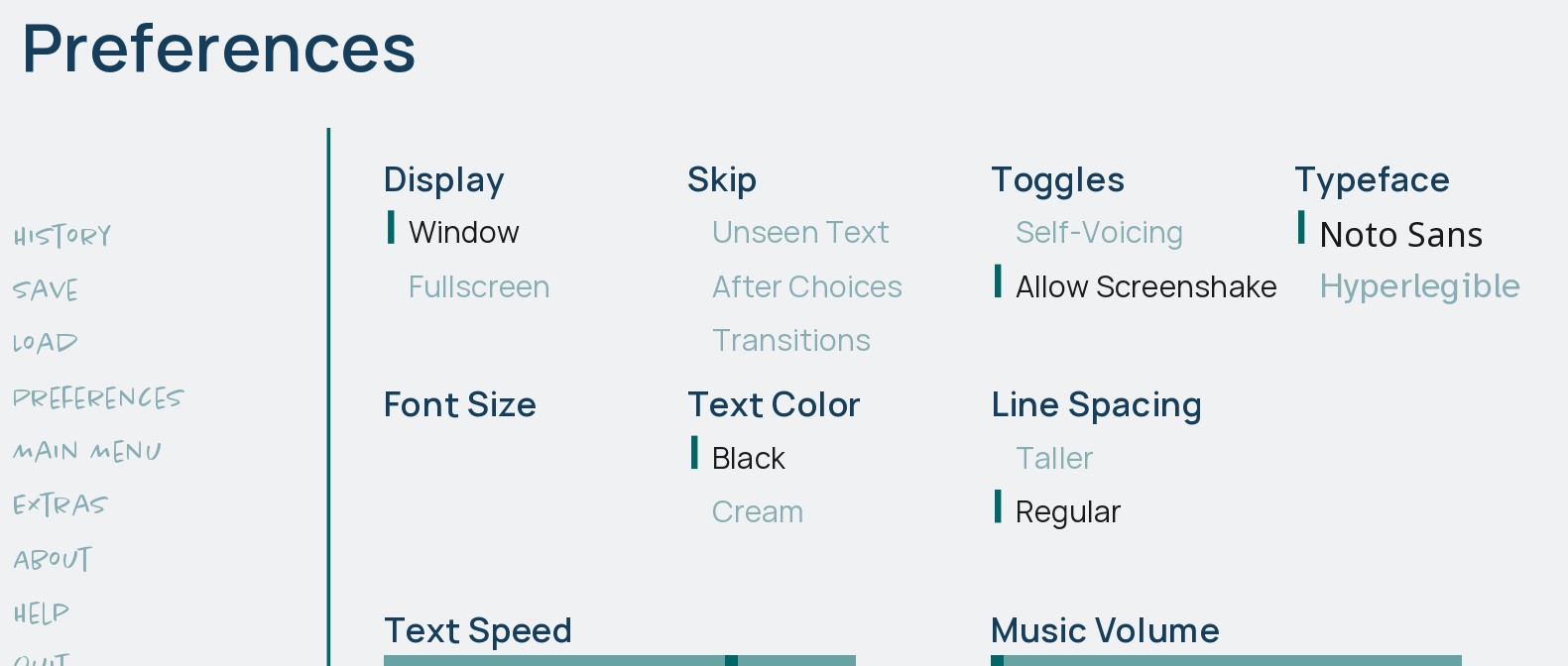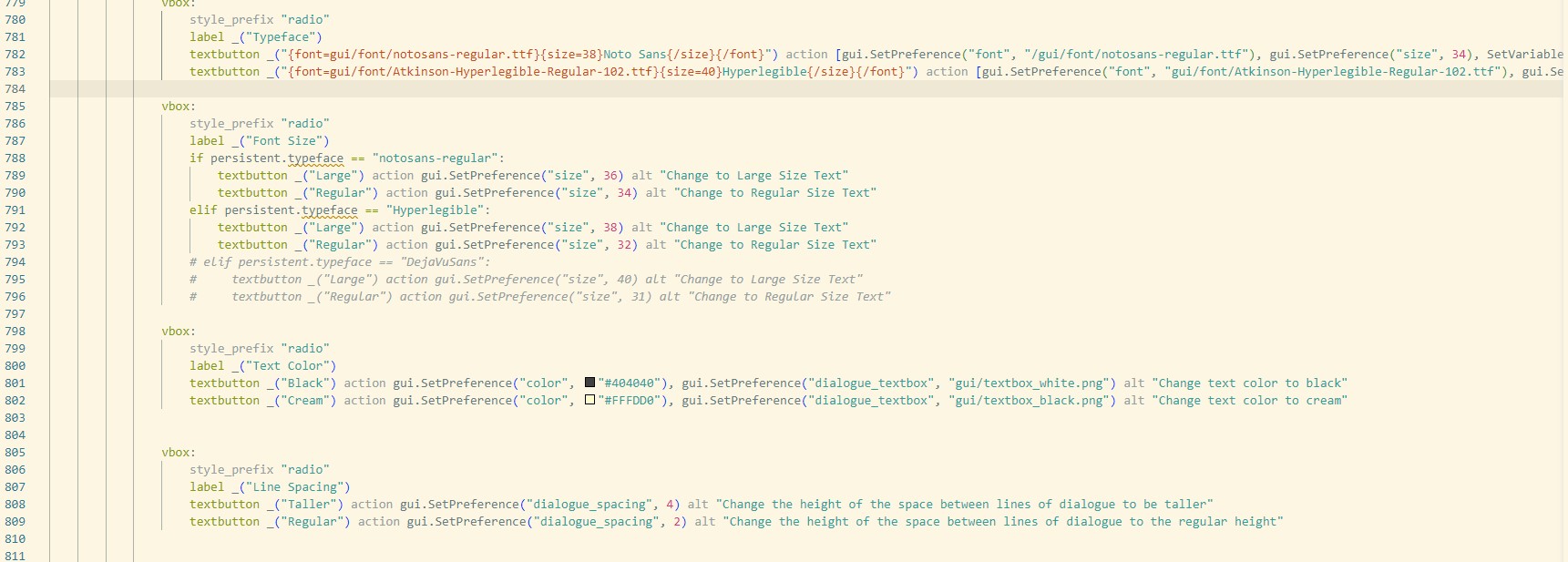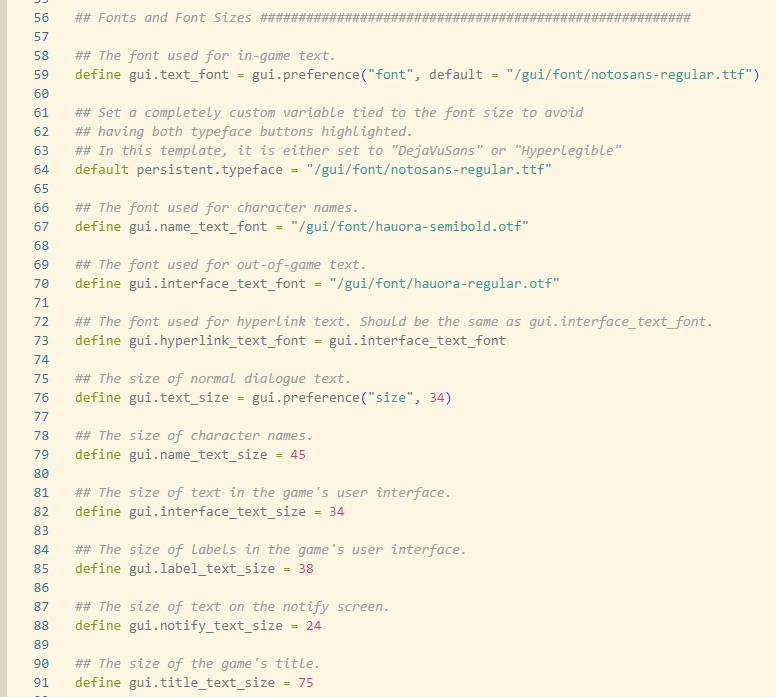Hi! Not sure if you'll see this, but thanks for the great template! I found it after I built some of my game, so I've been trying to transfer the things I want over, but I've run into some problems. I hope it's okay to ask for help here.
1. The font sizing options have disappeared for my chosen default font (NotoSans). They appear for Hyperlegible though
2. Line Spacing doesn't seem to change for either font (NotoSans AND Hyperlegible)
3. And not a problem, but I'm not good at coding - I'm not sure how to make the custom screenshakes, and $ shake () yields only one workable shake. I don't know how to make the screenshakes on by default either
This is the front end:

And this is the backend for the Preferences screen with what I hope is the most relevant part of code:

And this is the backend in my GUI.rpy:

I tried to copy the formats used, but the font sizing still won't show up. For the line spacing, I copied the part of the template code over from preferences.rpy, but I didn't see a difference in my game (I only saw it in the web demo). I've also tried changing "style say_dialogue" line in screens.rpy by adding in
line_spacing gui.preference("dialogue_spacing", 2)
But it hasn't worked. If you could help me troubleshoot this, I'd much appreciate it!
Thanks!


